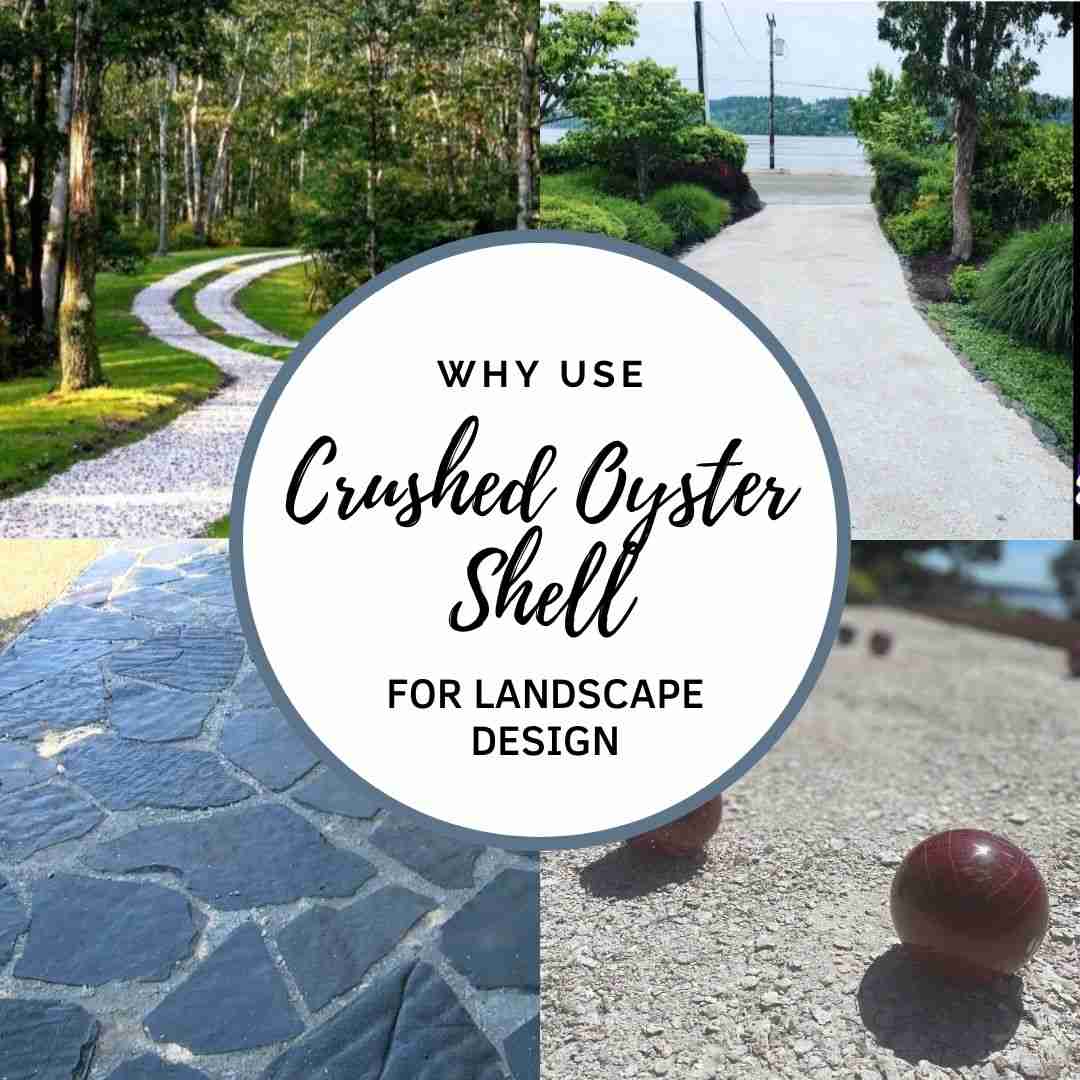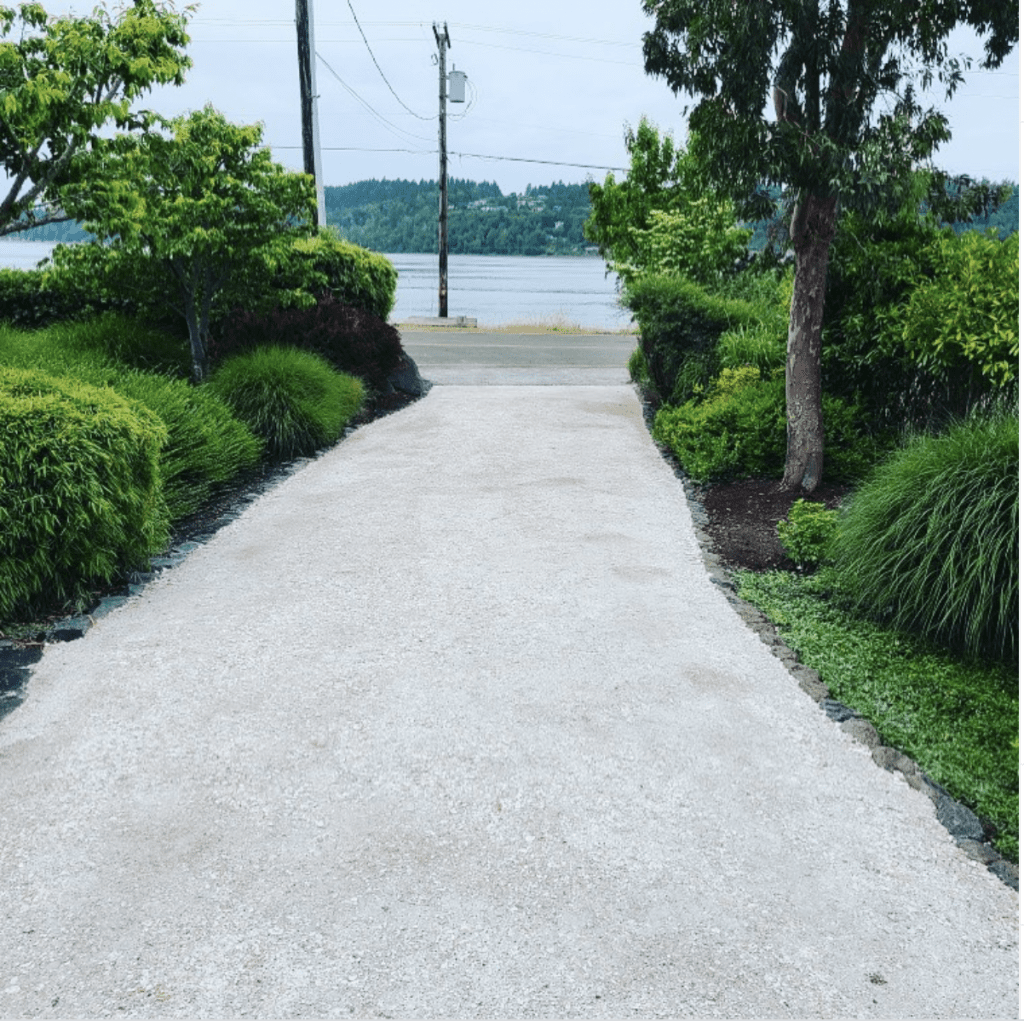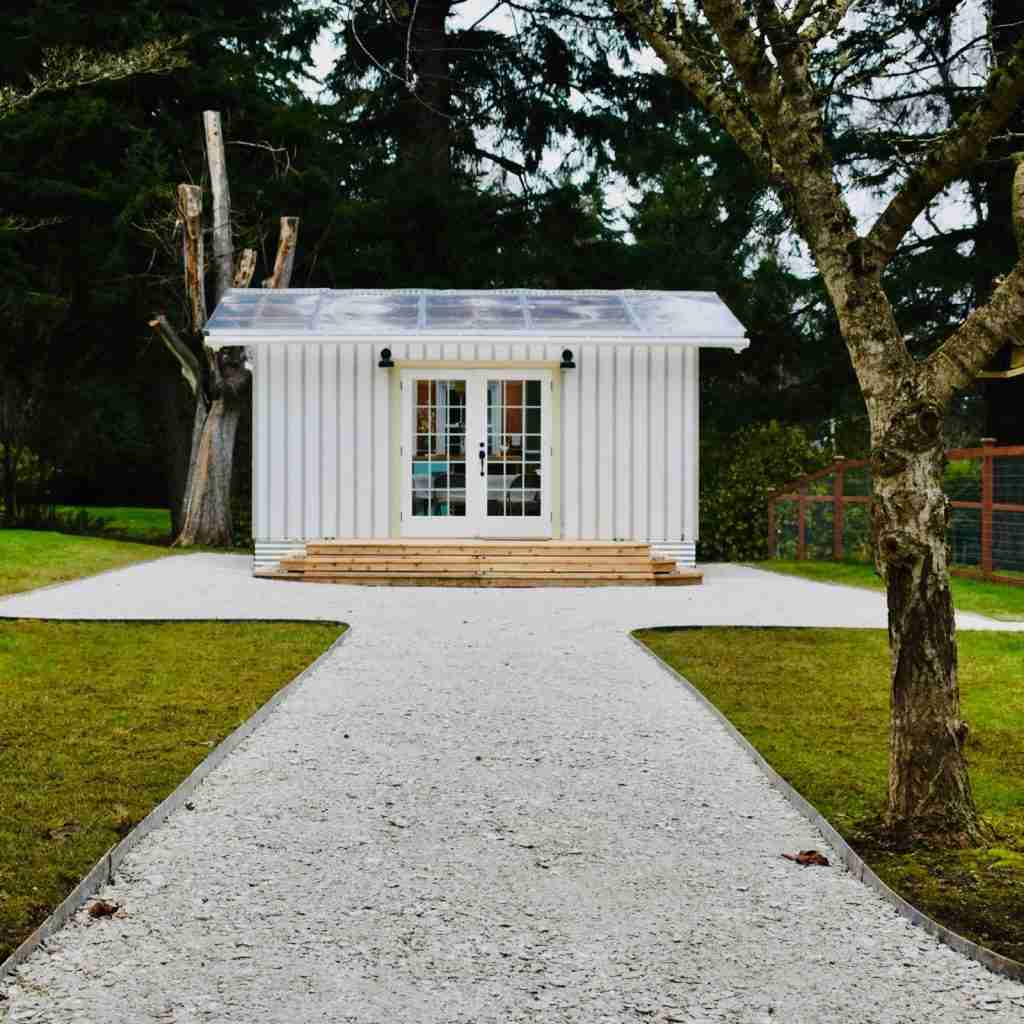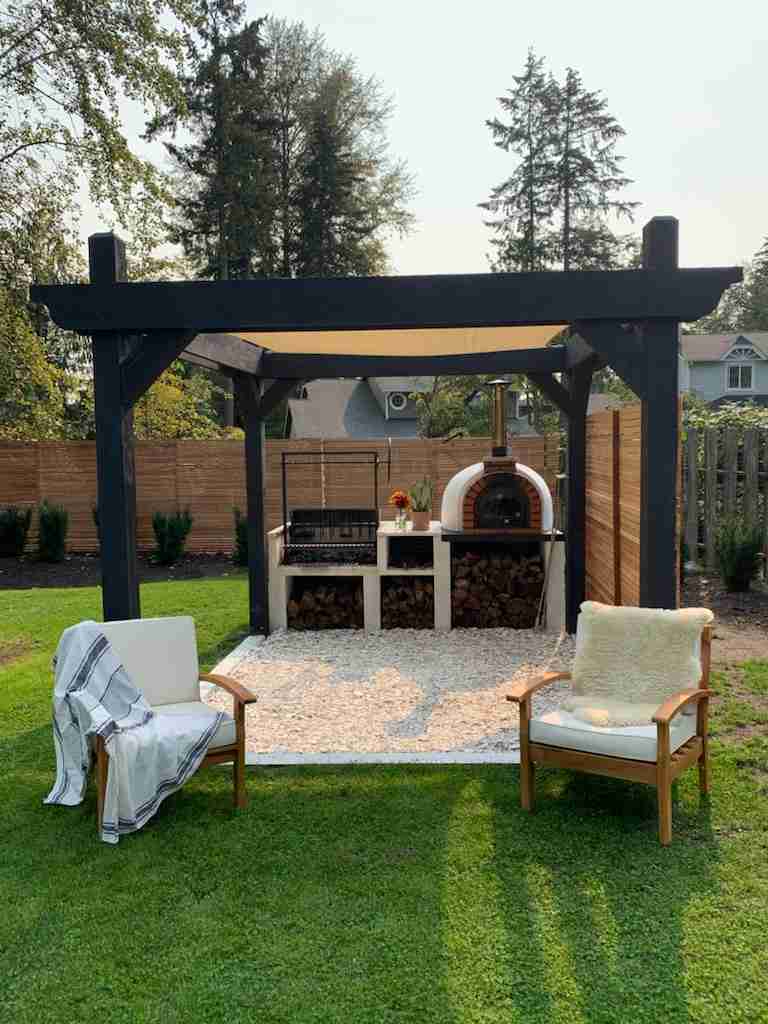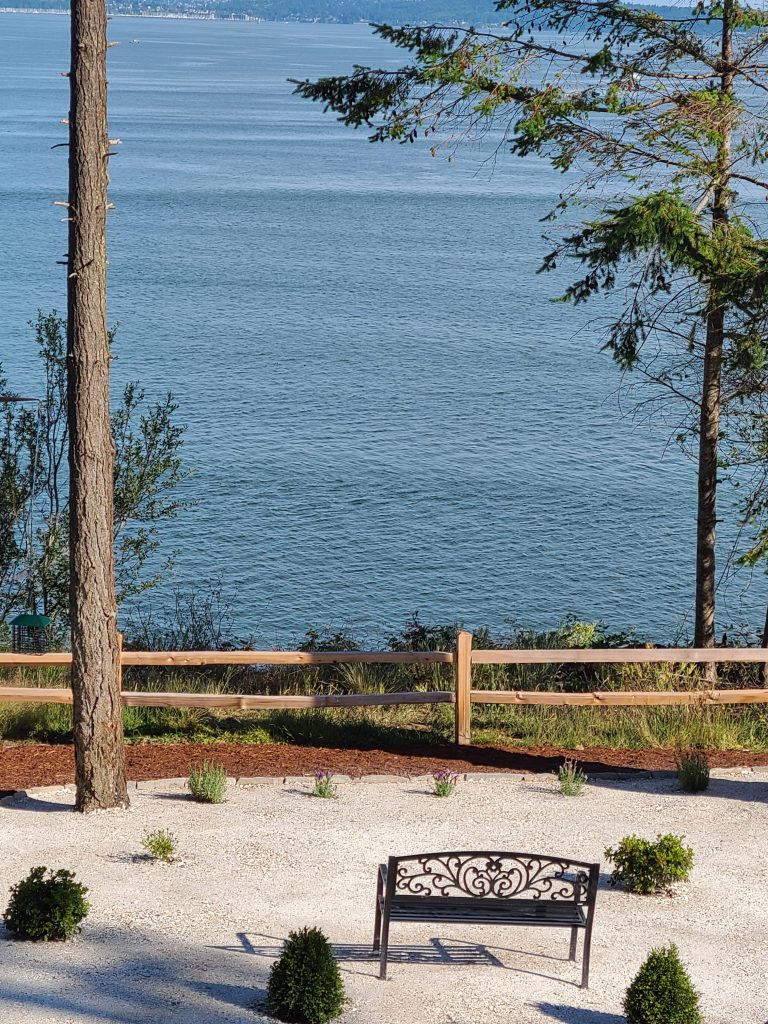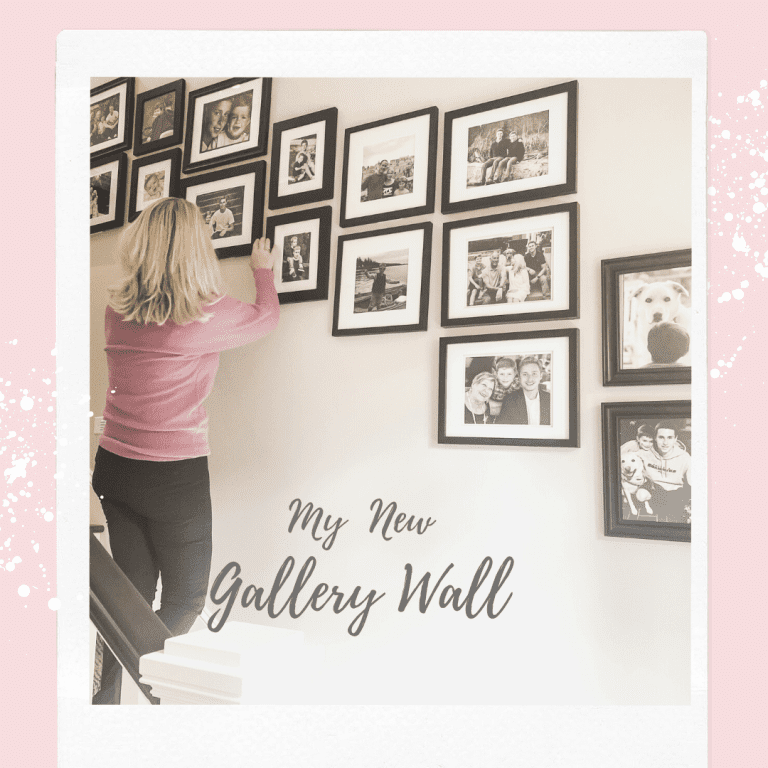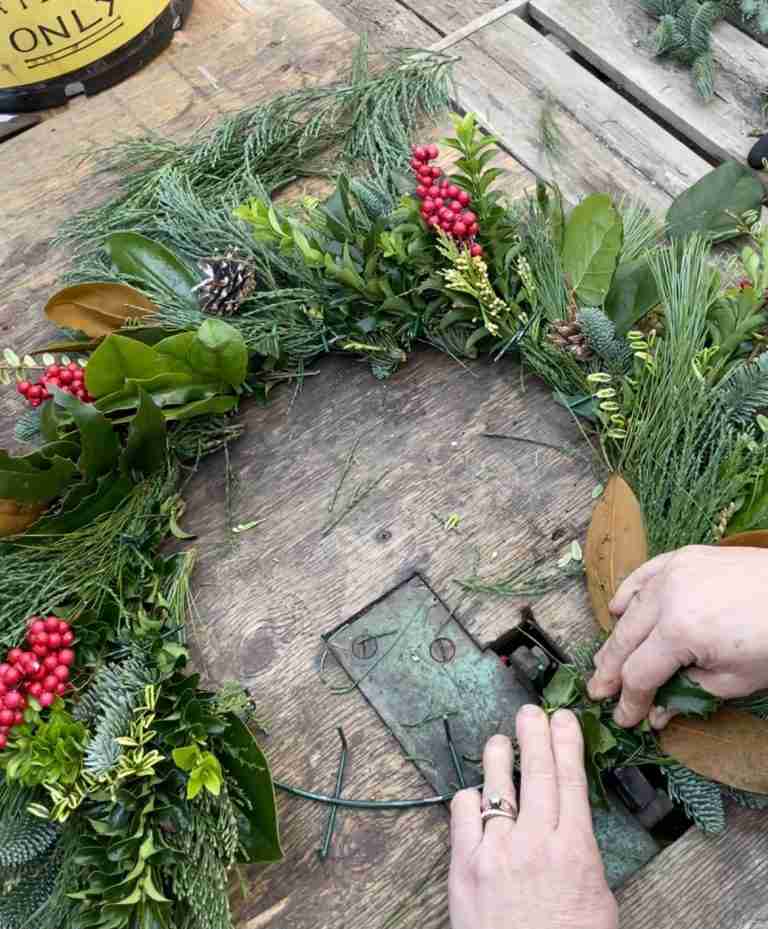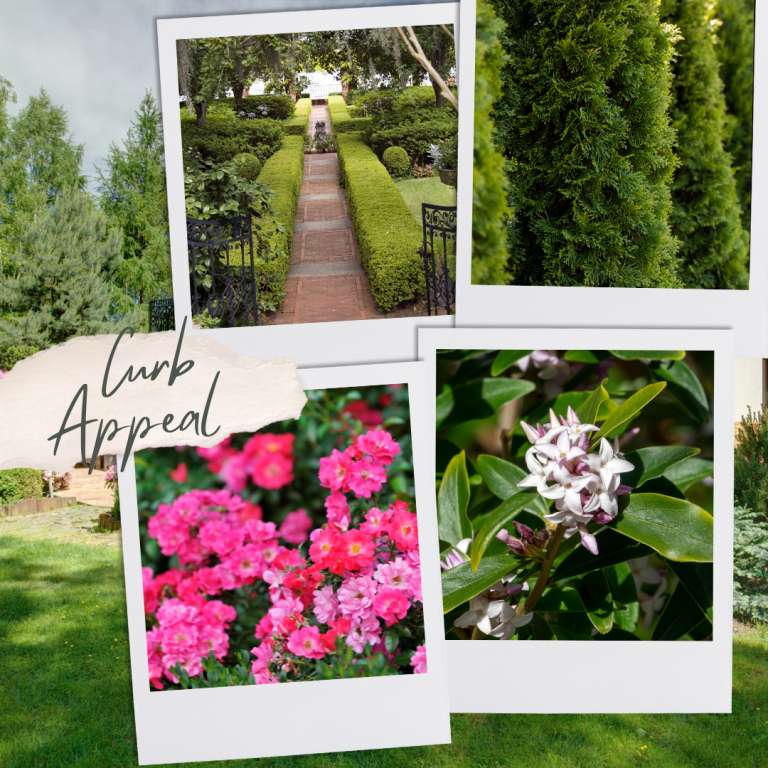11 Reasons To Use Crushed Oyster Shell In Your Landscape
I am so excited to share the fastest growing landscape trend. It’s become a favorite landscaping secret element that I have incorporated into my garden and landscape. Actually ,it’s no secret at all. The Indigenous people on the coastline have been using it for over 3,200 years ago in many ways.
Crushed oyster shell for landscape design is the fastest growing landscape and hardscape trend. Learn more about the sustainable landscape material.
The sustainable material? Crushed oyster shells from our local coastline. The Native Americans understood the value of oysters. They harvested oysters then crushed the shells and used them on paths which provided a permeable and sturdy passageway.
Crushed oyster shells make for a striking contrast in any landscape. This is why it’s bare none the fastest growing sustainable landscaping trend in the market today. There is eleven reasons oyster shell material is in big demand.
Instead of using the typical crushed bluestone or gravel, consider using crushed oyster shell in your decorative landscaping.
Sustainable Landscape Design- Crushed Oyster Shell
If you are seeking an innovative way to transform your landscape and garden into a unique sustainable gorgeous design, we have an idea for you to explore. Oyster shell complements any aesthetic landscape design especially in coastal areas like the Pacific Northwest. Ideal for commercial and residential use, crushed shell has become one of the most sought-after landscaping materials.
The hardscape designs below were designed and installed by ShellScapes
Speaking from personal experience, we removed gravel and replaced it with beautiful crushed oyster shell. The result is a compact path that is soft on bare feet and ideal for the Pacific Northwest rain and drainage issues. ShellScapes did a fabulous job installing my new path.
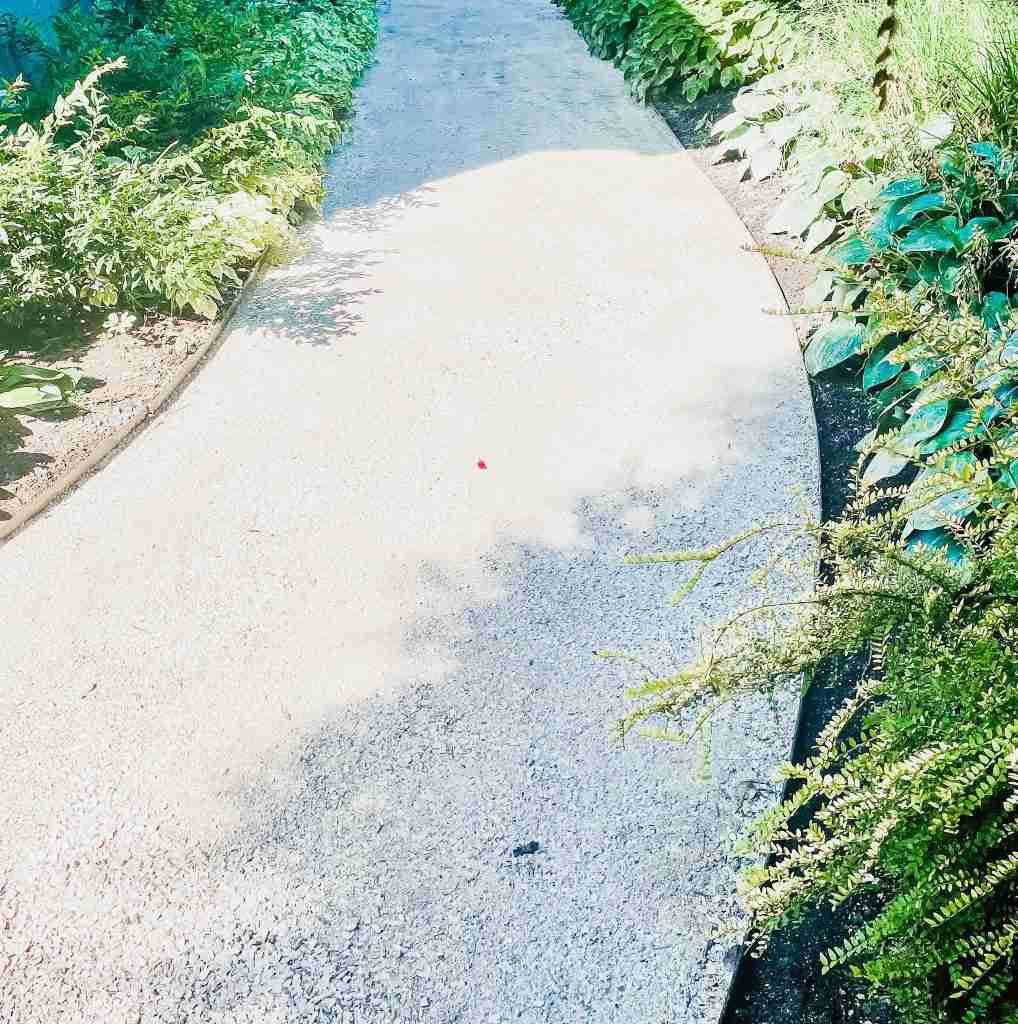
The Story Of ShellScapes- Crushed Shell Story
I was introduced to Mark Soboil on Bainbridge Island, who launched Shellscapes, a brainchild of the COVID-19 era. ShellScapes business has taken off quickly as more people learn the benefit of using recycled shell material for gorgeous landscaping and hardscape projects.
Many people adore the classic New England -Cape Cod look of crushed seashell driveways and walkways. Crushed shell has been used for hardscape and landscape projects for centuries on the east coast. This hasn’t been the case on the west coast where I am from. This is where ShellScapes come into play.
Where Do Oysters Live? The Recycling Issue
Given the prevalence of oysters on Washington’s coastlines and the popularity of the oyster product on the East Coast, where it is considered a premium product, especially compared to clamshell, Soboil said he is genuinely surprised that oyster shell isn’t more common in Washington’s landscapes. “At the moment, people are still wrapping their head around using the product in the Northwest,” he said.
I am not sure you are aware, but the oyster industry has major waste-management dilemmas for local growers. Farmers used to harvest the oyster, shuck the shell and bottle the meat.
They would eventually put the shells in bags, which they placed back in the ocean, where oysters would regrow. But technology has changed that industry. Most now grow land-based oysters so shells now pile up.
“The issue for them is about the recycling of the shell,” Soboil said. The increased demand for oysters on the half shell by local restaurants over the past few years has changed the growing practices of local oyster farmers.
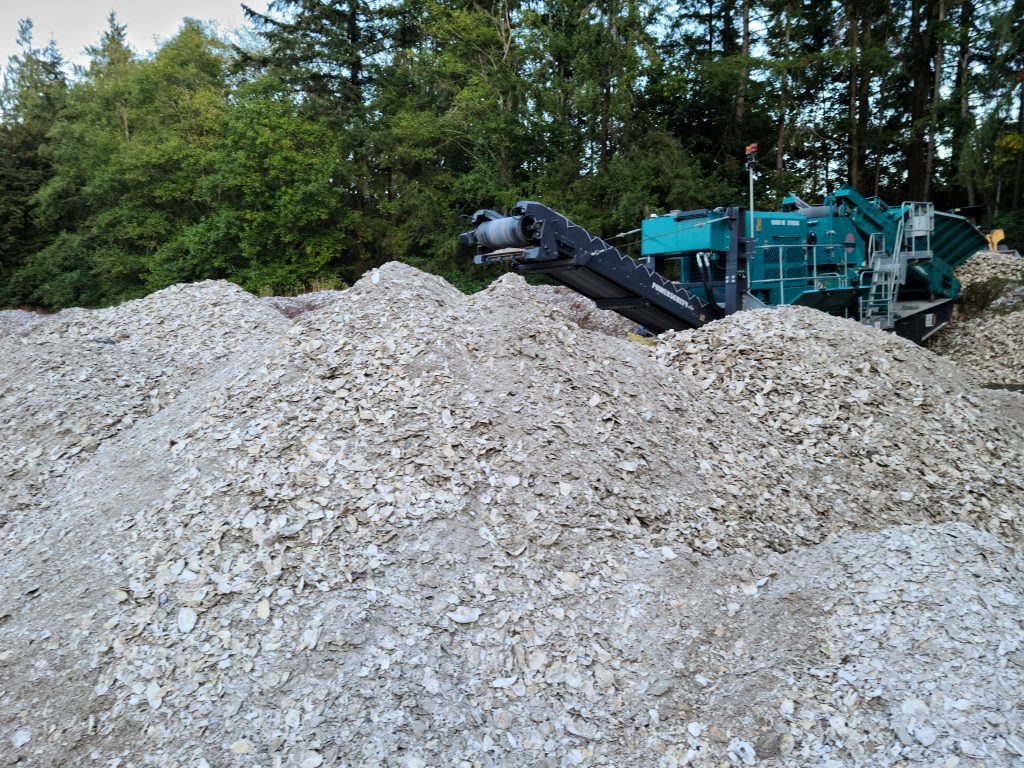
The Magical Natural Garden & Landscape Material
Soboil and Shellscapes repurposes the piles of unused shells to transform driveways, paths, bocce courts, and gardens. The more I learn about how crushed oyster shells are,the more obsessed with the oyster shell and all its glory.
It’s amazing how nature provides solutions to environmental issues, it’s just a matter of figuring out the solution. It’s clear that oyster shell is a magical substance that is transforming how we garden and landscape. Crushed oyster shells make for a striking contrast in any landscape. This is why it’s bare none the fastest growing sustainable landscaping trend in the market today.
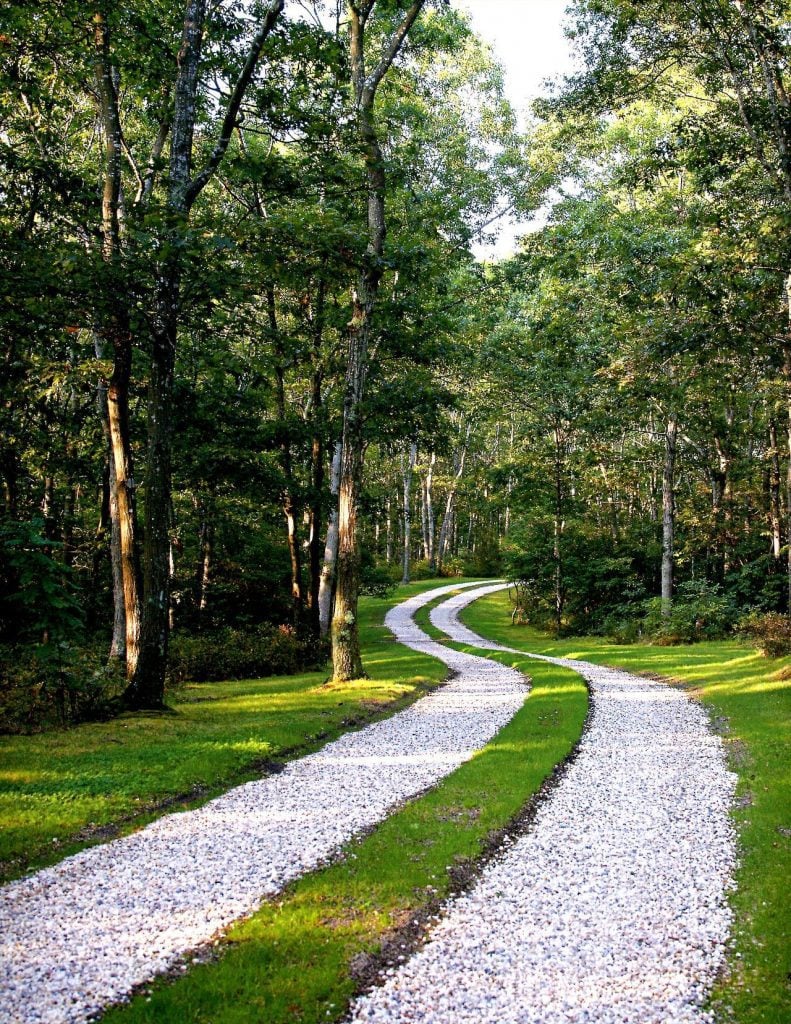
The more I learn about how crushed oyster shells are, the more obsessed I am with all the reasons to use this natural, sustainable coastal material.
Eleven (11) Top Reasons To Use Crushed Oyster Shell
1. Eco-Friendly Landscape and Hardscape Material
You can feel good about knowing you’re supporting an eco-friendly product that keeps giving back to nature. While other products used in the garden can be dangerous or toxic to the environment, crushed oyster shell material is 100% environmentally-friendly.
Second only to coal-powered electricity, the manufacture of cement is the largest emitter of greenhouse gasses and it accounts tor 5% of yearly anthropogenic global CO2 production. Using a natural substitute to concrete is a step in the right direction in making a difference.
The Ideal Landscape Material
The oyster shell’s inherent properties make it an ideal material for driveways and walking paths. When crushed, the shell’s small particles flake into a natural binder, known as oyster flour. As the shells get driven over or walked on, they break into smaller pieces.
This is why coastal oyster shell pathways are some of the most beautiful path designs.
Over time, the shells will break down to make a very solid driving or walking surface but will require periodic replenishment. As the shell breaks down, it naturally fills in, unlike gravel or any other small stone.
Oyster flour is like a natural binding glue that results is a compact effective surface with a coastal white, mother-of-pearl color that’s soft enough to walk over barefoot. Oyster shell is often used when laying flagstone paths because it creates a solid bond.
Few materials will create the dramatic visual effect of seashells contrasting with a lush green lawn.
2. Crushed Oyster Shells Help With Drainage
The natural product provides excellent drainage, so you don’t need to worry about drainage issues. This is a big deal in the Pacific Northwest. Rainwater runs through shell particles and percolates into the ground acting as a great natural fertilizer that enriches the soil.
Mixing crushed shell into a gravel is a new trend. It’s affordable for people and businesses who has a large area to cover
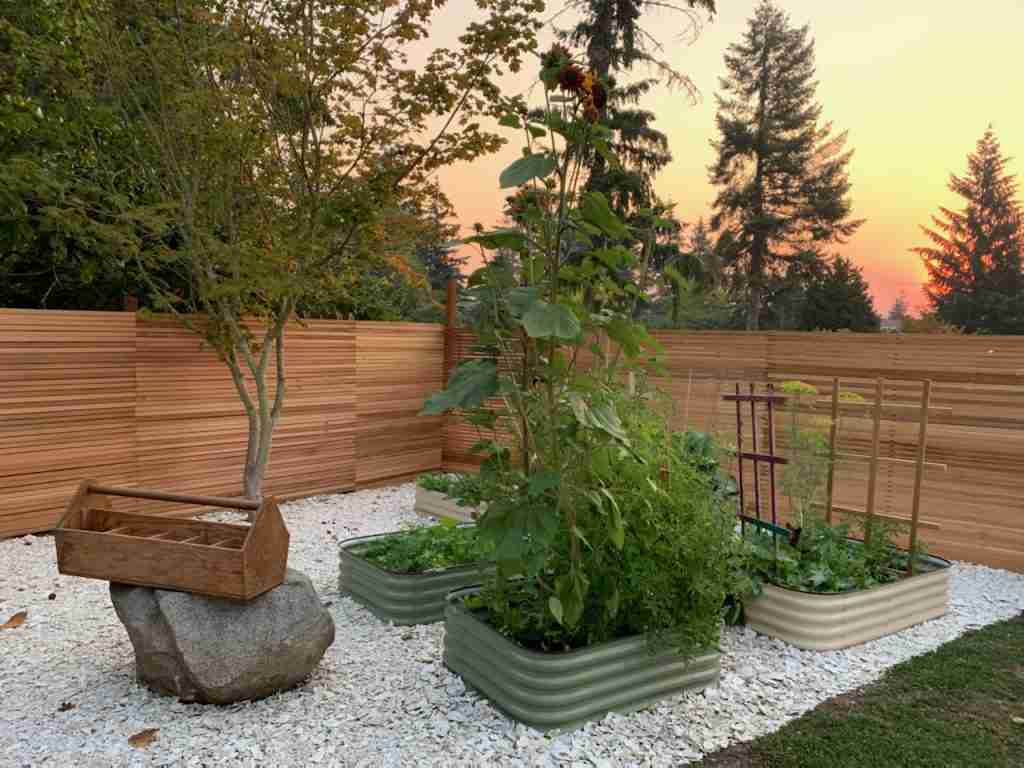
3. Crushed Oyster Shells Are Gorgeous Bright & Functional
Crushed shell is gorgeous bright, and functional for path, patios, courtyards and driveways. Light color of the crushed shells means a nice cool surface for warmer months. Come winter; they’re a great way to brighten up your space during those grey days. At night, my path offers a moon-lit look and feel.
4. Oyster Shells Are Low Maintenance
Durable and low-maintenance – Sustainable crushed oyster shell is an excellent alternative to gravel and can be used on pathways, driveways, and many other hardscaping projects. It is natural, functional—and not just for seaside landscapes.
It’s significantly different than standard asphalt, gravel, or concrete. Unlike gravel which uses a chemical binder, the shells have a natural binding agent that won’t wash away and risk contaminating groundwater!
5. Oyster Shell Is A Deterrent For Garden Pests
The sharp edges of oyster shells act as pest control with moles and voles. Locate them at the edges of tunnels to deter them. Slugs often refuse to crawl across those that are crushed and surrounding your plants.
6. Less Weeds
The high density of the crushed shell means that weeds are restricted by access to sunlight and therefore don’t grow. Crushed shell ground covering also helps prevent new weeds from growing on top of it.
7. Nutrient For Soil- Marine Fertilizer
Adding crushed shells to the soil makes for an ideal additive due to the calcium and micronutrient content that plant roots can absorb. . Adding crushed shells to soil produces a stable release of nutrients that regulate PH levels.
When the PH level in the soil is balanced, it improves the nitrate uptake, strengthening the plant cell walls. In other words, if you place the crushed shell in a vegetable garden, your veggies will grow faster and will be more vital.
In terms of soil fertilizing, crushed shell works excellent for both backyard gardens and agricultural operations. Oyster shell’s marine materials naturally release nutrients into the ground and help maintain a healthy pH and nutrient balance that significantly benefit your plants.
One of the significant benefits of using the crushed shell as a natural fertilizer is its calcium to the surrounding plants. The calcium that is contained within the crushed shells enters the soil after each shell breaks down. As they do, more nutrients are provided directly to each plant within the garden.
8. Oyster Calcium Acts As A Mulch
It helps other natural fertilizers like mulch to supply nutrients needed by your plants. One study even found that the application of crushed oyster shells to agricultural land greatly improved crop productivity:
The study notes that oyster-shell meal application increased soil organic matter, available [Phosphorus], and exchangeable the concentrations of the cations.
The improved soil pH and nutrient status significantly increased the microbial biomass (Calcium and Nitrogen) concentrations and stimulated soil enzyme activities…The enhanced soil chemical, soil pH, and biological properties resulted in increased crop productivity…so , crushed oyster shell can be used as a natural mulch.
9. Coastal Vibe
A crushed oyster shell path, patio or driveway offers your home a coastal vibe like no other. If you like the feeling of the ocean, installing a bight white path made of shells is ideal. You can use various grades of oyster shells.
Some people like to see a bit of the shell matter .. others want a flat compact surface like a bocce court. It depends on use and function. No matter what size crushed oyster shell you use, the aesthetic appeal creates a “wow” factor. A top home trend for sure.
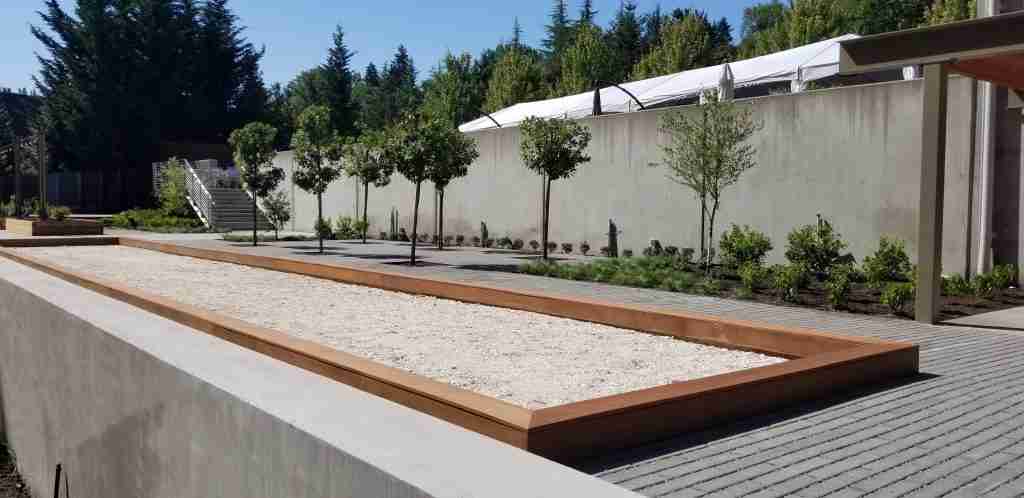
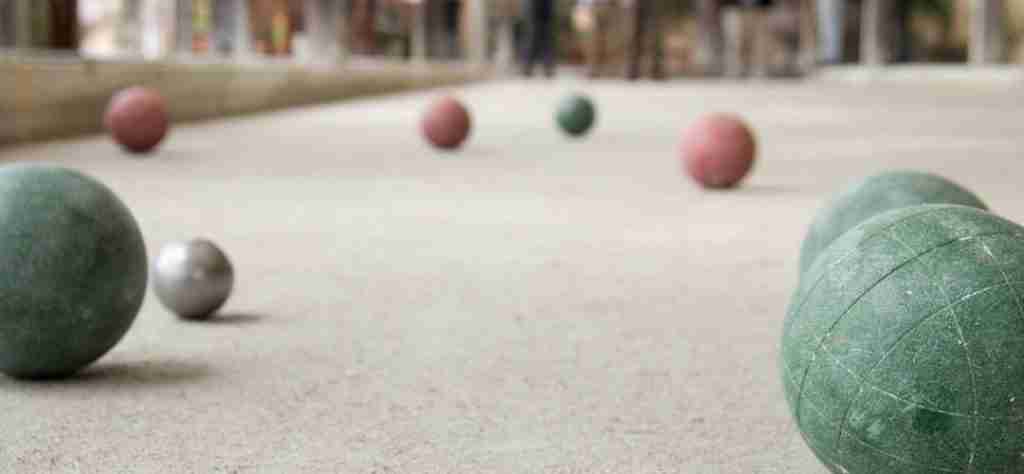
10. Bocce Ball Court Material
Crushed oyster shell has been used forever for bocce ball courts. Bocce ball is one of the fastest growing backyard sports besides pickleball.
The fine oyster shell flour on a bocce ball court is the ideal surface for bocce ball. It’s a nice and flat and compact. Shells have been used for decades because shells recalcify. Unlike clay, sand or other bocce blends, oyster shells are made of 98% calcium carbonate. This means that over time, the shell will re-calcify (fuse) together.
11. Oyster Shells For Chicken
If you have chickens- You need to feed them oyster shells! Yes, you heard that right. Because oyster shells are almost pure calcium carbonate, they make a helpful supplement for poultry farmers that want their chickens to lay thick-shelled eggs.
Eggshells are about 95% calcium, so it’s no wonder why laying hens need a calcium supplement.
If you are in the Pacific Northwest, reach out to ShellScape Landscape Design Company for shells and installation. I highly recommend working with a landscape specialist like ShellScapes who can help determine the best plan for your place of business or home.
You can also try to crush oyster shells yourself or buy bags of crushed shell. Head to your local feed store and pick up shell powder or crushed shell.

